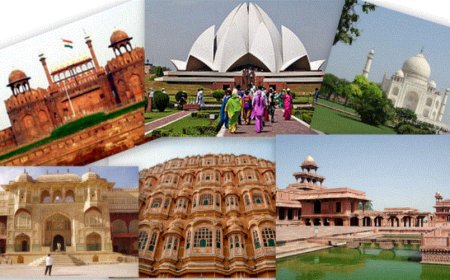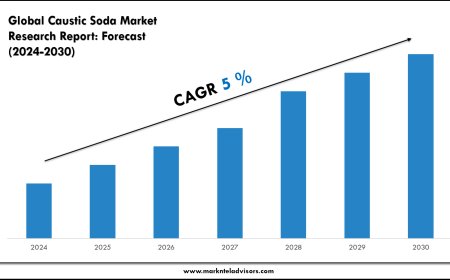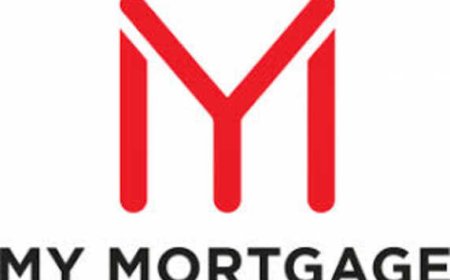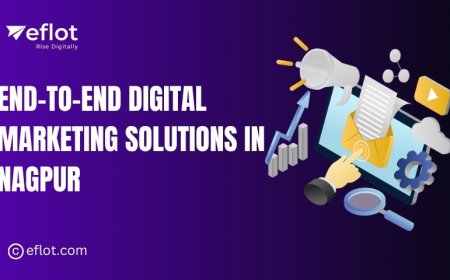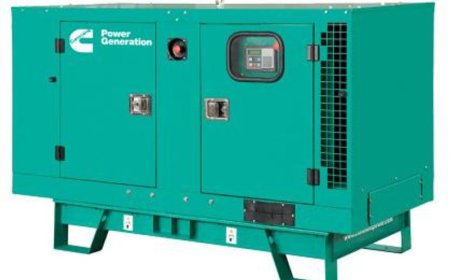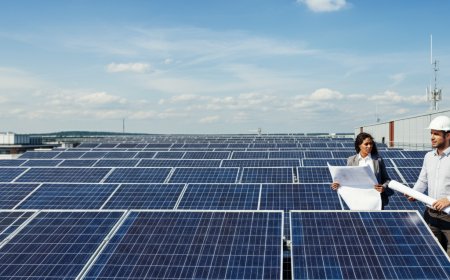Revolutionizing Filmmaking: The Power of Virtual Production Studios
Virtual production has emerged as a transformative force in the filmmaking industry, blending cutting-edge technology with creative storytelling to redefine how films, television shows, and digital content are created. By combining real-time computer-generated imagery (CGI), LED walls, motion capture, and augmented reality (AR), virtual production studios are empowering filmmakers to craft immersive worlds with unprecedented efficiency and creative control. In this guest post, we’ll explore what virtual production is, its benefits, how it works, and why companies like ARwall are leading the charge in making this technology accessible to creators of all levels.
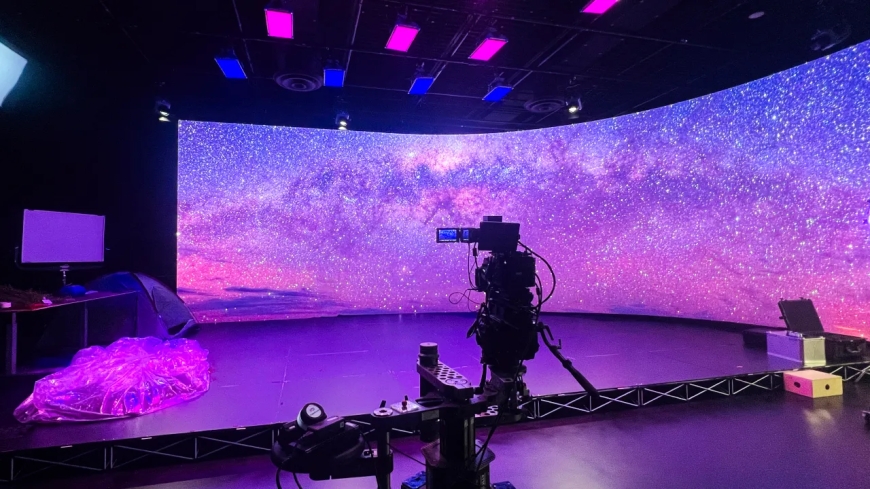
Virtual production has emerged as a transformative force in the filmmaking industry, blending cutting-edge technology with creative storytelling to redefine how films, television shows, and digital content are created. By combining real-time computer-generated imagery (CGI), LED walls, motion capture, and augmented reality (AR), virtual production studios are empowering filmmakers to craft immersive worlds with unprecedented efficiency and creative control. In this guest post, well explore what virtual production is, its benefits, how it works, and why companies like ARwall are leading the charge in making this technology accessible to creators of all levels.
What is Virtual Production?
Virtual production is a filmmaking technique that integrates physical and digital elements in real-time to create dynamic, interactive environments on set. Unlike traditional filmmaking, which relies heavily on green screens and post-production to add visual effects, virtual production allows directors, cinematographers, and actors to see and interact with fully realized digital environments during filming. This is achieved through a combination of advanced technologies, including:
- LED Walls: High-resolution LED screens display photorealistic backgrounds, replacing traditional green screens and allowing for real-time visualization of virtual sets.
- Real-Time Rendering Engines: Software like Unreal Engine or Unity generates and manipulates digital environments instantly, enabling filmmakers to adjust lighting, camera angles, and scenery on the fly.
- Camera Tracking Systems: These systems sync the cameras movements with the virtual environment, ensuring seamless integration between physical and digital elements.
- Motion Capture and AR: Motion capture tracks actors movements to integrate digital characters or objects, while AR overlays digital elements onto the physical set.
This integration breaks down the traditional linear filmmaking processpre-production, production, and post-productioninto a more fluid workflow. Directors can make creative decisions in real-time, seeing near-final visuals during the shoot rather than waiting for post-production. The result is a more efficient, cost-effective, and creatively flexible process that has been embraced by major studios and independent filmmakers alike.
The Evolution of Virtual Production
Virtual production isnt entirely newits roots trace back to early experiments in the late 2000s, with pioneers like James Cameron using it for Avatar (2009). However, it gained widespread attention with The Mandalorian (2019), which showcased the power of LED walls to create immersive environments for the Star Wars universe. Since then, the technology has evolved rapidly, driven by advancements in game engines, LED technology, and camera tracking systems.
Today, virtual production is no longer exclusive to blockbuster budgets. Companies like ARwall (website: arwall.co) are democratizing access to these tools, offering solutions that scale from smartphone-based setups to massive LED volumes. The global virtual production market, valued at USD 3.04 billion in 2024, is projected to grow at a compound annual growth rate (CAGR) of 13.5% through 2034, reaching USD 9.52 billion. This growth reflects the increasing adoption of virtual production across film, TV, advertising, and education.
Benefits of Virtual Production
Virtual production offers a host of advantages that are transforming the filmmaking landscape:
-
Cost and Time Efficiency: By eliminating the need for extensive location shoots or physical set construction, virtual production reduces travel and logistics costs. Real-time rendering also minimizes post-production time, as much of the visual effects work is completed on set.
-
Creative Freedom: Filmmakers can create any environment imaginablefrom alien planets to historical citieswithout leaving the studio. Instant changes to lighting, weather, or scenery allow for creative experimentation that was previously impossible.
-
Real-Time Visualization: Directors and cinematographers can see the final composite imagery during filming, enabling immediate creative decisions and reducing the need for costly reshoots.
-
Enhanced Actor Performance: Actors can interact with realistic digital environments rather than imagining a scene against a green screen, leading to more authentic performances.
-
Sustainability: Virtual production reduces the environmental impact of filmmaking by minimizing travel and physical set construction, aligning with the industrys growing focus on eco-friendly practices.
These benefits make virtual production a game-changer for projects of all sizes, from Hollywood blockbusters to indie films and educational programs.
How Virtual Production Studios Work
A virtual production studio is a physical space equipped with the tools and technology needed to blend live-action and digital elements. The core components include:
-
LED Walls: These high-resolution screens display virtual environments with fine pixel pitch (as low as 1.8mm) to avoid moir effects and ensure crisp visuals. They also provide realistic lighting and reflections on actors and props.
-
Real-Time Rendering Engines: Game engines like Unreal Engine power the virtual environments, rendering scenes in real-time to match camera movements and lighting conditions.
-
Camera Tracking Systems: These systems, such as ARwalls VIVE Mars CamTrack or smartphone-based trackers, ensure the virtual background aligns perfectly with the cameras perspective.
-
Motion Capture and VFX: Motion capture technology integrates digital characters or objects into the scene, while real-time VFX allows for dynamic effects like explosions or weather changes.
The workflow in a virtual production studio begins in pre-production, where digital assets and environments are created. During production, these assets are displayed on LED walls, and camera tracking ensures seamless integration. Post-production focuses on fine-tuning rather than extensive VFX work, streamlining the entire process.
ARwall: Leading the Virtual Production Revolution
At the forefront of this industry transformation is ARwall, a pioneering virtual production company based in Studio City, California. With over 120 deployments and a reputation for excellence, ARwall has established itself as a leader in making virtual production accessible, scalable, and user-friendly. Their innovative tools and services cater to filmmakers of all levels, from indie creators to major studios.
ARwalls Innovative Solutions
ARwall offers a suite of products and services designed to simplify virtual production:
-
ARFX StudioBox: This all-in-one studio in a box is a compact, powerful solution that delivers studio-grade results without requiring coding or 3D design skills. It includes the ARFX app, which allows filmmakers to access a marketplace of pre-configured, pre-lit scenes, making it ideal for aspiring creators. The StudioBox supports up to 4K resolution and uses smartphones for camera tracking, eliminating the need for additional hardware.
-
ARFX Pro Plugin: This professional-grade plugin integrates with Unreal Engine, providing video game-style menus for easy control of camera settings, lighting, and colors. It streamlines workflows by bringing complex tools into an intuitive interface.
-
ARFX Infinite Studio: Powered by Unreal Engine and ARwalls patented technology, this solution offers real-time rendering, dynamic virtual environments, and seamless hardware integration. Its perfect for film, TV, live events, and education, with cloud-based tools for multi-user collaboration.
-
Virtual Production Supervision: ARwall provides end-to-end support, including stage setup, screen operation, software integration, and custom scene creation. With over 60 deployments for major studios, their team ensures seamless coordination and cinematic results.
Why ARwall Stands Out
ARwalls commitment to accessibility sets it apart. Their solutions scale from small-scale setups using a smartphone and a 4K TV to massive LED walls for blockbuster productions. By prioritizing in-camera visual effects (ICVFX), ARwall eliminates the need for extensive post-production, delivering final pixel results on set. Their integration of AI-generated environments further compresses pre-production timelines, allowing filmmakers to focus on creativity.
ARwalls leadership, including CEO Rene Amador and Virtual Production Lead Jocelyn Hsu, brings decades of experience in emerging entertainment technology. Their work on projects like Sonys PSVR2 trailer for Crossfire and Muppets Haunted Mansion has earned them accolades, including the AI Product of the Year at NAB Show 2024.
Case Study: ARwall in Action
For Muppets Haunted Mansion, ARwalls team provided virtual production supervision, delivering a seamless blend of physical and digital elements. Their ARFX tools allowed the production to achieve an ambitious scope on a tight schedule, earning praise for their adaptability and solution-oriented approach. This project showcased how ARwalls technology enables complex productions to stay on budget and timeline while maintaining high-quality visuals.
The Future of Virtual Production
As virtual production continues to evolve, its impact on the entertainment industry is undeniable. The technology is becoming more accessible, with companies like ARwall leading the charge in democratizing tools for creators of all budgets. The rise of mobile studios, AI-enhanced workflows, and cloud-based collaboration will further streamline production processes, making high-quality content creation available to a broader range of filmmakers.
Educational institutions are also embracing virtual production, with universities like Webster University partnering with ARwall to establish cutting-edge studios. These facilities prepare students for modern filmmaking careers by providing hands-on experience with industry-standard tools.
The global expansion of virtual production stages84 in the United States and 40 in the United Kingdomsignals a shift toward a new standard in filmmaking. As costs decrease and technology advances, virtual production will become the norm, enabling creators to tell stories that were once unimaginable.
Conclusion
Virtual production studios are redefining the art and science of filmmaking, offering unparalleled creative freedom, efficiency, and accessibility. By blending real-time CGI, LED walls, and advanced tracking systems, these studios empower filmmakers to bring their visions to life without the constraints of traditional methods. ARwall is at the forefront of this revolution, providing innovative tools like the ARFX StudioBox and ARFX Infinite Studio that make virtual production accessible to all. Whether youre an indie filmmaker or a major studio, ARwalls solutionsavailable at arwall.cooffer the scalability, simplicity, and quality needed to create stunning visual stories. As the industry continues to evolve, virtual production will undoubtedly shape the future of storytelling, and ARwall will remain a key player in this transformative journey.





